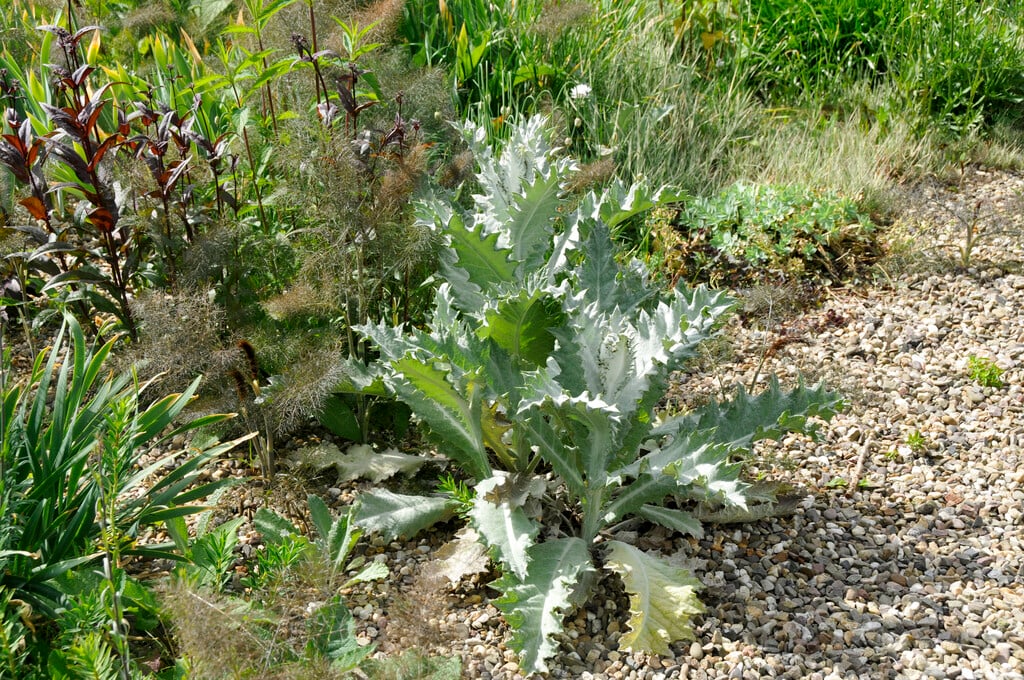Onopordum nervosum
reticulate thistle
A tap-rooted biennial forming a rosette of silvery-grey, spiny leaves to 50cm long, with prominent pale veins. Leafy, branched flowering stems to 2.5m tall are produced in the summer of the second year, bearing clusters of rounded, spiny-bracted, rosy-purple flower-heads
Size
Ultimate height
1.5–2.5 metresTime to ultimate height
1–2 yearsUltimate spread
0.5–1 metresGrowing conditions
Moisture
Well–drainedpH
Alkaline, NeutralColour & scent
| Stem | Flower | Foliage | Fruit | |
| Spring | Green Grey Silver | |||
|---|---|---|---|---|
| Summer | Pink Purple | Green Grey Silver | ||
| Autumn | ||||
| Winter |
Position
- Full sun
Aspect
South–facing or West–facing
Exposure
Exposed or Sheltered Hardiness
H7Botanical details
- Family
- Asteraceae
- Native to GB / Ireland
- No
- Foliage
- Deciduous
- Habit
- Columnar upright
- Genus
Onopordum are are upright biennials with a basal rosette of simple or pinnately lobed, grey-hairy leaves and large, thistle-like, pink or purple flower-heads in summer
- Name status
Correct
How to grow
Cultivation
Grow in fertile, well-drained neutral to slightly alkaline soil in full sun; may self-seed freely. Ideal for a gravel garden or wild areas
Propagation
Propagate by seed sown in containers in a cold frame, or in situ in autumn or spring
Suggested planting locations and garden types
- Architectural
- Coastal
- Gravel garden
- Wildlife gardens
- Cottage and informal garden
Pruning
No pruning required
Pests
Diseases
Generally disease-free
Get involved
The Royal Horticultural Society is the UK’s leading gardening charity. We aim to enrich everyone’s life through plants, and make the UK a greener and more beautiful place.

